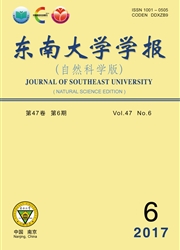

 中文摘要:
中文摘要:
在dq旋转坐标系下推导出同步发电机的瞬态计算模型,并以三相5.5 kW同步发电机的三相短路实验为例,验证了该模型的正确性.然后,根据飞轮脉冲电源放电过程中励磁系统工作任务的不同,将飞轮脉冲电源的放电过程分为2个阶段:在第1阶段中,励磁电压保持不变,输出电压快速上升至额定值;在第2阶段中,调节励磁电压,使输出电压维持在额定值.以同步发电机瞬态模型为核心,通过引入这2个阶段励磁系统的约束方程,建立了飞轮脉冲电源放电过程的计算模型.最后,通过给定参数及初始条件,对该计算模型进行求解与分析.结果表明,这种计算模型能够较好地反应飞轮系统放电过程中同步发电机的动态性能.
 英文摘要:
英文摘要:
A model for predicting the transient behaviors of a synchronous generator in rotating dq reference frame is derived,and the accuracy of the model is verified by 3-phase short circuit experiments on a 3-phase 5.5 kW synchronous machine.According to the different assignments of the excitation system in the discharging process of the flywheel energy storage system(FESS),the discharging process of the FESS is divided into two stages.In the first stage,the excitation voltage is maintained till the output voltage rises to its rated value.In the second stage,the excitation voltage is adjusted to maintain the rated output voltage.By involving the excitation system constraint equations of the two stages,the calculation model for the discharging process of the FESS is derived based on the proposed synchronous generator model.Finally,the FESS's discharging model is calculated and discussed under specific parameters and initial conditions.The results show that this calculation model is effective for predicting the dynamic performance of the synchronous generator in the discharging process of the FESS.
 同期刊论文项目
同期刊论文项目
 同项目期刊论文
同项目期刊论文
 期刊信息
期刊信息
